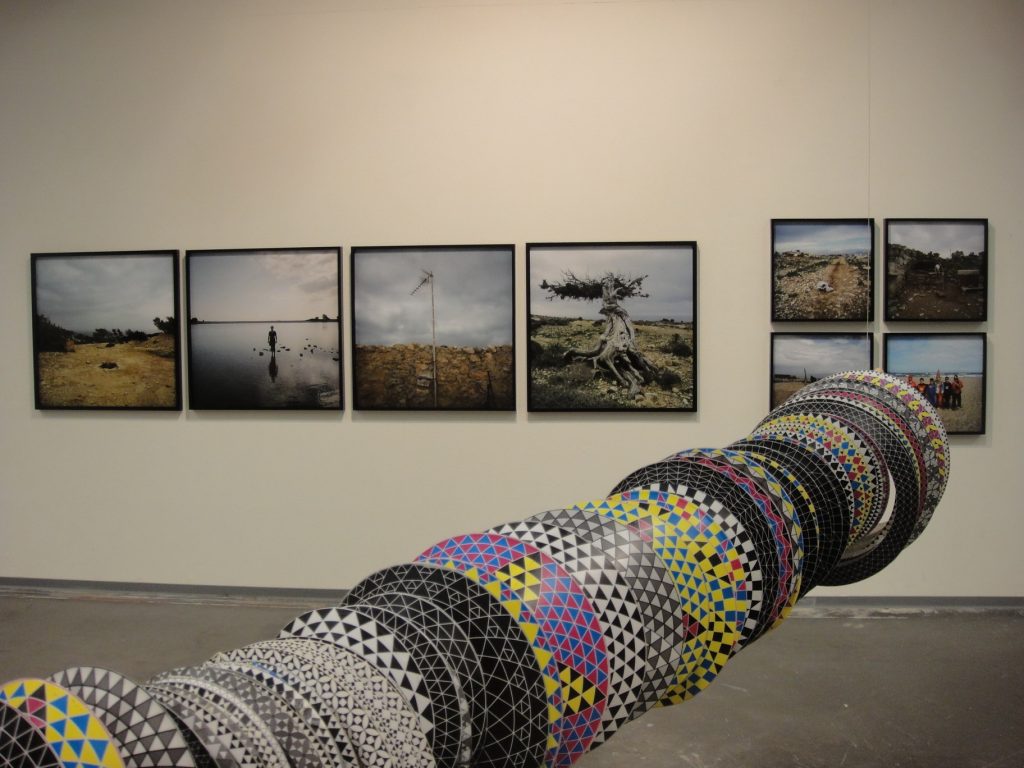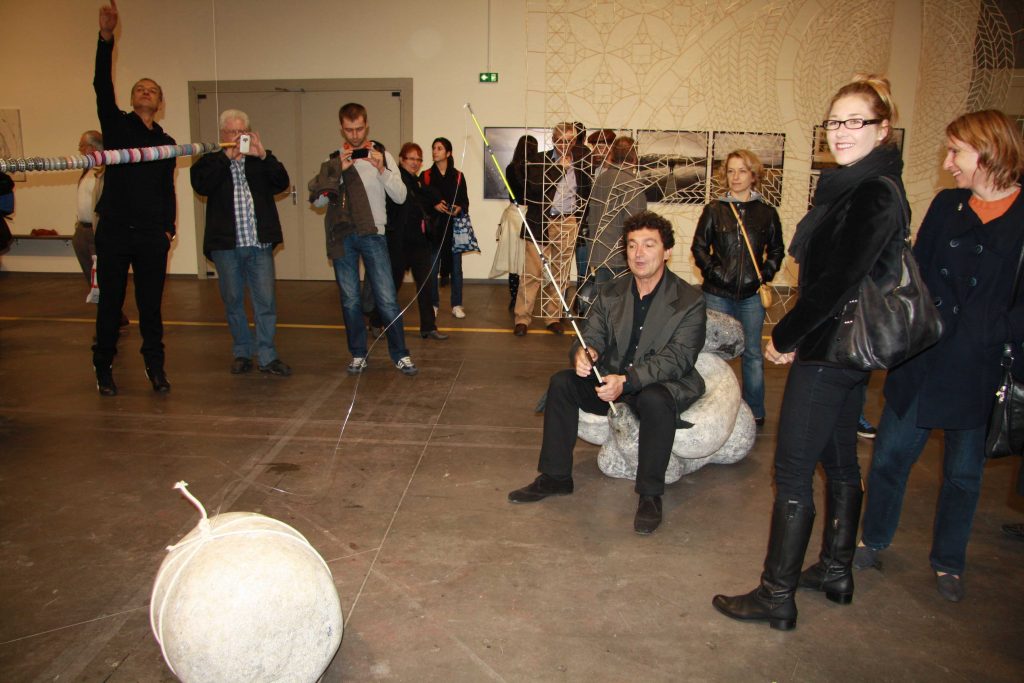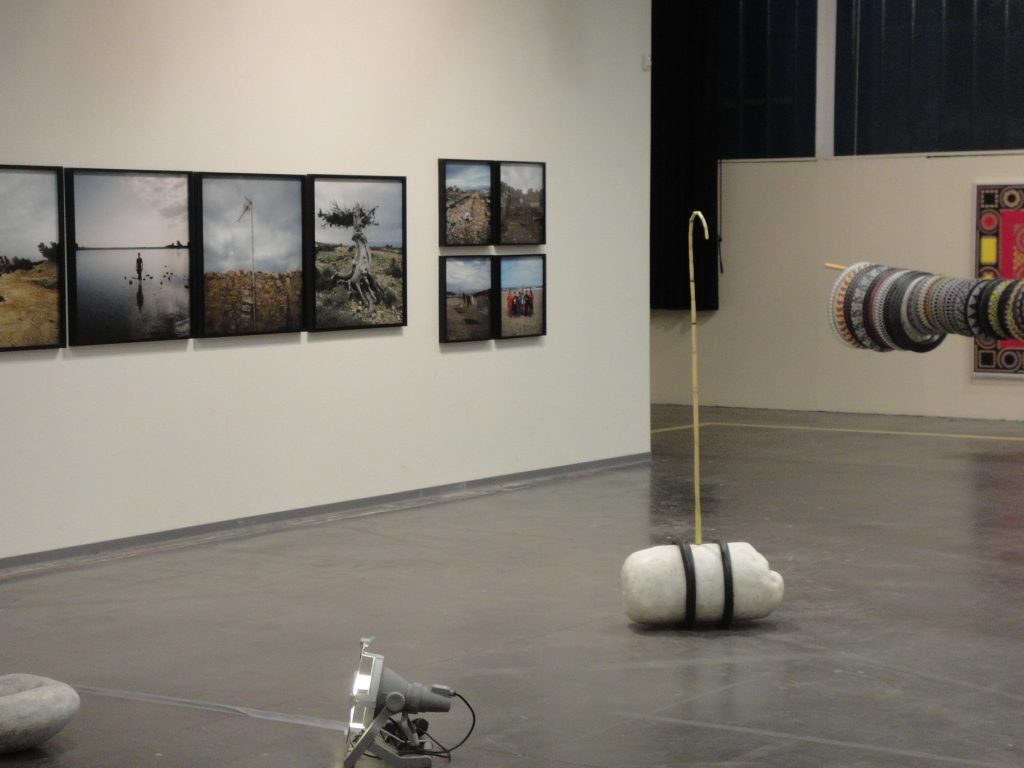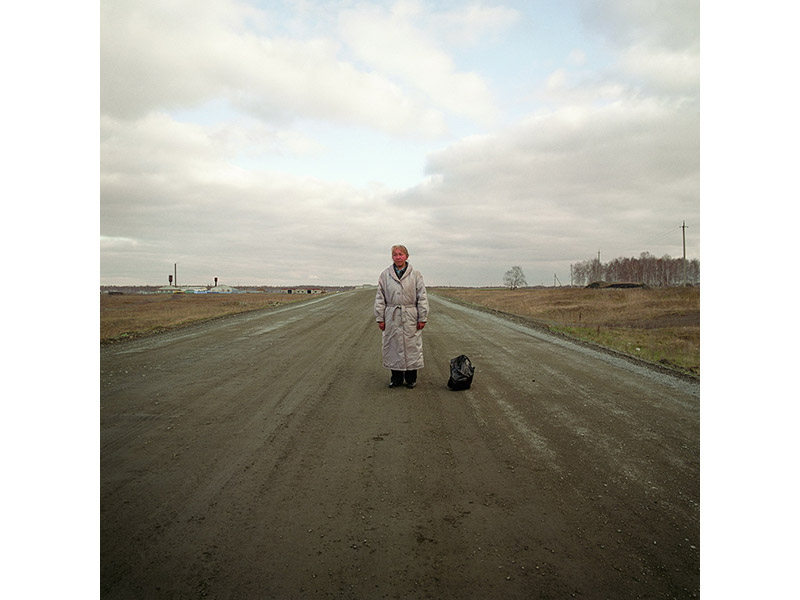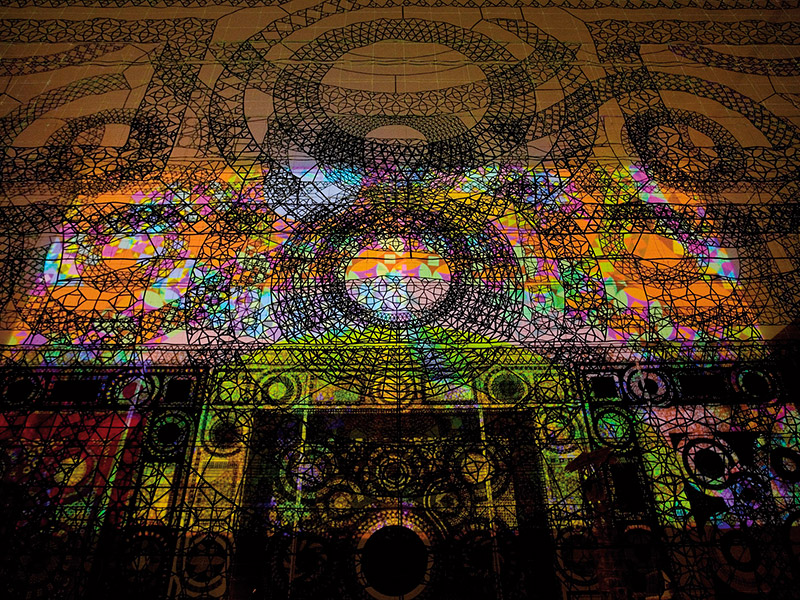Exhibition
23 October – 9 November 2012
Hall des Chars, Strasbourg
Within the framework of e.city – Rethymno

Artists: Nikos Alexiou, Pavlos Fysakis, Giorgos Gyparakis, Giorgos Koumendakis
Curators: Maria Marangou and Dimitri Konstantinidis
Concert – performance of Giorgos Koumendakis on Monday 22 October at 7:30 p.m., with Giorgos Konstantinou, Alexandra Papastefanou, Lorenta Ramou, Petros Touloudis et Tim Ward
The role of the artist always remains that of exploring his world, through innate and sometimes acquired experience. Primitive artists left the traces of their world on rocks, later men on altars, oracles and vessels, and in the Renaissance in churches and palaces. Contemporary artists. well versed in both the invisible and the visible world, including that of the digital screen, creates, defends and exchanges worlds.
Starting rules and concerns about the ‘sanctity’ of art as a religion of our time, together with references and concepts of cultural memory, inner images, landscapes selected (on what grounds, one wonders?) within the huge production of identity in the equitably shared Democracy of the Internet.
In the context of communication among these worlds, the presence of four artists with roots in Rethymno – one of the four large cities of Crete, the island which defines the origin as well as the border of Europe – in Strasbourg, the geopolitical centre of our continent. Here the term “cosmography’ may acquire a more realistic sense as the exchange of (possibly diverse) experiences.
The common element among the four artists apart from their native town is the delineation of the boundaries between the visible and the metaphysical, the structure of an architecture which is tangible as well as subtle, interpretative and conceptual. The course which links the non-handmade work of Nikos Alexiou with the photographic records of Pavlos Fyssakis, the sensitive volumes of Giorgos Gyparakis with the piano sounds of Giorgos Koumentakis, is characterised by a fusion of the ephemeral and the eternal, the earthly and the transcendental. One’s comments fit in snugly with the other’s reflections, and all four coexist and emphasise the catalytic involvement of the viewer.
It was anything but a difficult choice for the people of the Museum of Contemporary Art of Crete and of Αpollonia, the two institutions in charge of this exhibition.
The visual artists Νίκος Alexiou, Giorgos Gyparakis and Pavlos Fyssakis have already exhibited the works currently hosted in the Latterie at the Museum of Contemporary Art in Rethymnon. Composer Giorgos Koumendakis was invited in Strasbourg as the fourth Rethymnian of the group with his work Mediterranean Desert, which draws upon the flora and fauna of the Mediterranean. The music’s live performance at the official opening acquires a visual structure with the collaboration of Petros Touloudis and remains as a video installation for the duration of the show.
This music, says the composer, ignores tourist guides and becomes itself the medium for the reverie of the soul. In his reverie he opens a window to the Mediterranean sea, and lo and behold the grouper fish, the ornate wrasse, the cricket in the gorge of Kotsyfos, the spearmint and, of course, the musical charting of a peculiarity of the soul.
Along similar lines, in his “Non-profit Line” series the sculptor Giorgos Gyparakis urges for a redesign of everyday reality. Consumerism and affluence give way to the need for love, beauty and serenity. Humour and self-criticism define the ritual of the body as it relaxes in a sacred, rather surrealistic island and seeks nothing other than an idle routine. The ironic mood and the commentary in Greek Meditation climbs onto the wall-mounted black-figured inscriptions, a monument that depicts human activity on the beach, i.e. the Asian massage.
In Gyparakis’s sculptural installation the performance is twofold: it is what has gone on before in the artist’s studio and what the viewer does, who can fish for shrimp or perform Zen breathing in the resting area of the island’s beach.
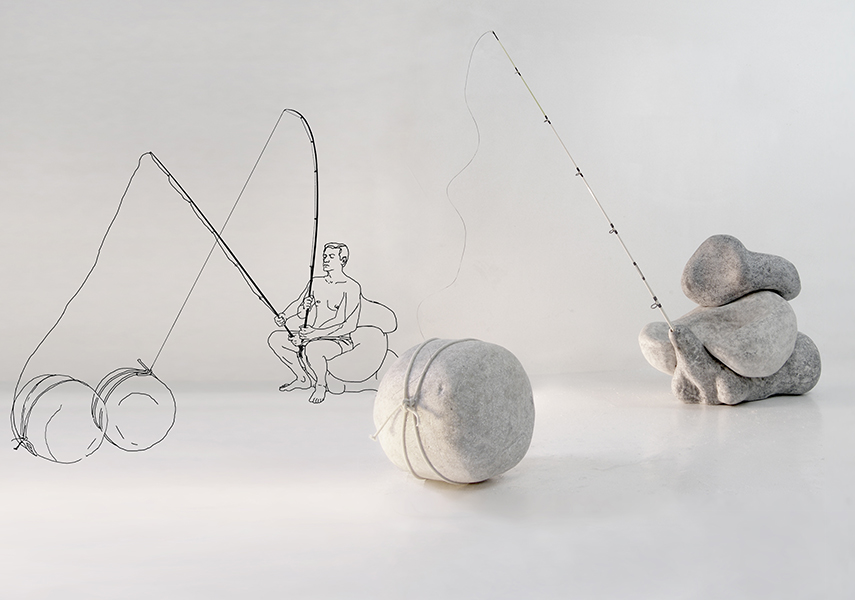
Pavlos Fyssakis is literal in his Cosmography or his photographs from all parts of Europe. Our prevailing concern of recent times about the meaning and the boundaries of European identity led him to a journey to the four corners of the continent.
These four corners are as different in their landscape as their people are similar. Gavdos in the south, Nordkapp and the white silence of the tundra in the north, Sintra in the west and in the east the Ural mountains and the heavy heritage of gulags, nuclear plants and the most heavily radiated area in the world.
For Western Christians heaven lies in the West, for Buddhists and Islamists in the East. For European citizens there may be no paradise beyond the fairy tales and what we expect to find from the exploration of Mars.
The image proclaims no manifestos about heaven or hell, yet as the camera clicks away the gaze of Fyssakis through the lens is wondering about the end or the beginning of Europe – and about the impact of man as the unpredictable factor.
“Being a spectator is not some passive condition that we should transform into activity. It is our normal situation,” suggests Jacques Ranciere. Amidst the huge debate among museums and institutions about how an exhibition is presented, we have no dilemmas.
In the tangible, the realistic, the ironic we follow our link and that of the artists. The work of Nikos Alexiou. We select a series from the mosaic floor of Iviron Monastery on Mt Athos – part of the artist’s installation in the Greek pavilion at the Giardini for the 52nd Biennale of Venice.
Nikos Alexiou worked with sensitivity in his brief but fruitful life, producing his ‘un-handmade’ works with diverse materials, borrowing from light and its transparency, using the computer as a loom and the primeval reed as a space for life.
Iviron Monastery, where the artist stayed on several occasions, exerted upon him the fascination from accepting the divine and promoted his personal idiom between the visible and the invisible, the tangible and the untouched, the heavy and the lightweight, the transient and the eternal. His was a manual practice that conversed with an utmost spirituality, persuading us to look upon the world as a floor and the embroidery as a protective cover against the elements of nature, “built” with faultless detail.
The world and the decor of Nikos Alexiou exude the comprehensible silence of a religious art that turns towards man with humility.
In collaboration with the Center of Contemporary Art of Crete, Rethymno
With the support of Hall des Chars / Friche Laiterie association, Strasbourg
